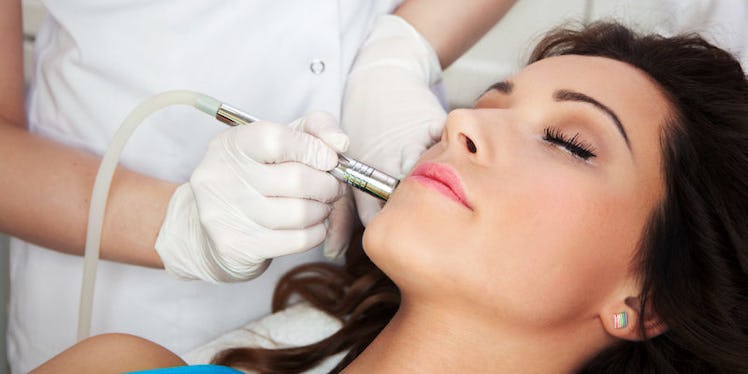
How Laser Treatments Can Cure Adult Acne, As Told By A Dermatologist
Like millions of other teens, Kendall Jenner struggled with debilitating acne growing up. In a recent blog post, Jenner opened up about her issues dealing with her condition and the negative effects it had on her self-esteem.
As a dermatologist, this is a story I hear all too commonly.
Jenner also discussed her “miracle” laser treatment, Laser Genesis, which she used to improve the breakouts and scarring from the condition. Here, I'm going to discuss the details of the fast-growing treatment of choice among Millennials around the country.
Acne is the most common skin condition in the United States, affecting approximately 40 to 50 million Americans annually.
While the vast majority of acne patients are in their teens or early 20s, it’s also becoming more common to see older patients suffering from devastating breakouts.
The best thing to do is attack the problem early, in order to prevent lifelong issues, like scarring and pigment alterations.
Topical medications like retinoids and anti-bacterial creams are the foundation of most acne treatment regimens. Oral medications like antibiotics and Accutane are generally reserved for moderate to severe forms, although many times, hormonal imbalances need to be ruled out first.
More recently, lasers, chemical peels and light therapies have been utilized to improve results and treatment times.
Scarring, in particular, has become a significant concern, but countless patients around the country have benefited from procedures like the Laser Genesis.
What is it?
Laser Genesis is the commercial name for the ND:YAG laser. The ND:YAG has a host of uses, ranging from treating prominent veins and removing unwanted hair to improving fine lines and wrinkles.
How does it work?
Laser Genesis delivers micro-pulses of laser energy to your skin, sparking a cascade of changes.
The main mechanism involves “bulk heating,” which warms the dermis (deeper layer of the skin) without damaging the epidermis (the superficial layer of the skin that protects you from all the harmful pollutants in the environment). Because the epidermis is spared, the patient doesn't suffer from the extended downtime many more aggressive lasers cause.
What does it do?
The procedure helps activate collagen remodeling, and it even improves the appearance of facial redness and brown spots. Anecdotally, we’ve seen patients note improvement in acne due to a decrease in oil production and pore size, and a significant improvement in acne scarring (via the collagen stimulation).
What does the treatment feel like?
Think of the feeling of the first few drops of warm oil when you're at a spa. Because the mechanism is bulk heating, the hand piece is quickly moved around different parts of the face.
In this way, the patient experiences a relaxing, warm sensation without the sharp sting of most lasers. Depending on the patient and the aggressiveness of the dermatologist, one can usually expect to receive between 1,000 to 2,500 pulses per area.
How many treatments do you need?
Most patients see some mild benefit after the first treatment, but we generally recommend four to six treatments to keep the skin remodeled to its optimal level. Usually, the "wow" moment happens after the third or fourth treatment.
For some deeper scars (acne or otherwise), patients may require more treatments, but it all depends on how old and deep the scar is.
Who can do it?
The ND:YAG laser is one of the few lasers known to be safe for all skin types.
As a dermatologist, the biggest challenge with darker skin types is many more aggressive lasers (like the CO2 and some fractional lasers) leave patients with hyper-pigmentation. This can be permanent.
Patients with acne (mild to moderate), acne scars or large pores — or even those who just want the “fresh” look — can benefit from undergoing this. It’s become pretty popular with actors and actresses for quick touch-ups prior to red carpet events, as well as with patients coming in before engagements, weddings or other large events.
What are the side effects?
Patients may have redness for a day or two after the treatment due to the heat applied. But more commonly, the redness fades within a few hours.
What's the bottom line?
Laser Genesis is a great non-invasive, minimal downtime procedure that helps with acne, acne scars, texture improvement and overall rejuvenation for all skin types. It’s quickly become the go-to laser prior to big events for celebrities across the country.
Costs around the country generally range from $300 $600 per session on average. This sometimes changes, depending on the patient’s condition and the amount of time needed to treat it.